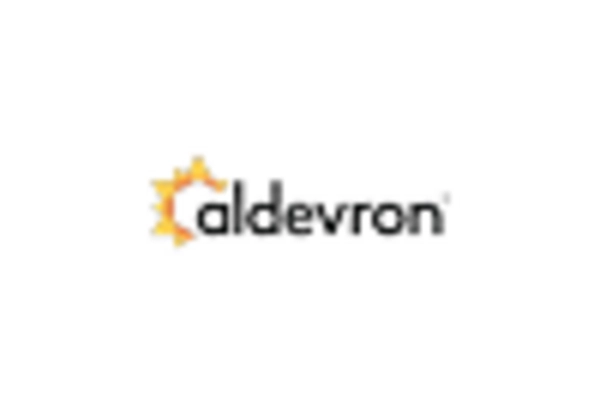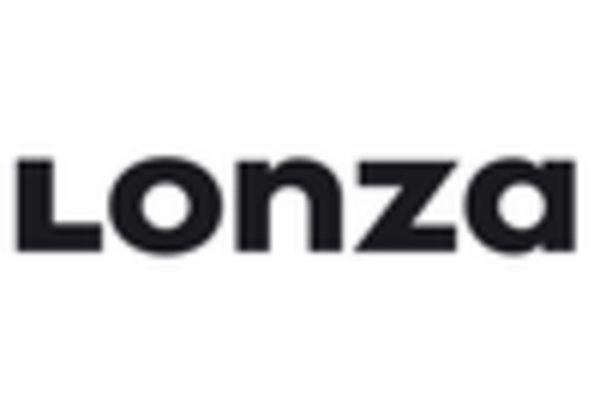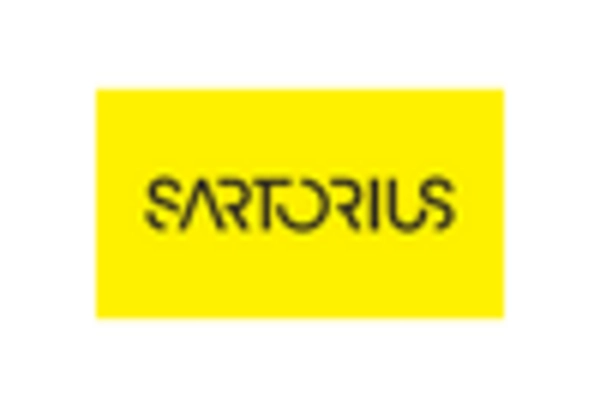Advancements in Biotechnology
The live cell-encapsulation market in France is experiencing a surge due to advancements in biotechnology. Innovations in cell encapsulation techniques, such as microencapsulation and nanoencapsulation, are enhancing the efficacy of therapeutic applications. These technologies allow for the protection of live cells from harsh environmental conditions, thereby improving their viability and functionality. The French biotechnology sector is robust, with investments reaching approximately €2 billion in recent years. This financial backing is likely to foster further research and development in live cell-encapsulation technologies, potentially leading to new applications in regenerative medicine and immunotherapy. As a result, the live cell-encapsulation market is poised for growth, driven by the increasing need for effective drug delivery systems and personalized treatment options.
Regulatory Support and Frameworks
Regulatory support plays a crucial role in the live cell-encapsulation market in France. The French government has established frameworks that facilitate the approval and commercialization of innovative biotechnological products. This supportive regulatory environment encourages companies to invest in research and development, knowing that their products can be brought to market more efficiently. For instance, the French National Agency for Medicines and Health Products Safety (ANSM) has streamlined processes for clinical trials involving encapsulated live cells. This regulatory clarity is likely to enhance the confidence of investors and stakeholders in the live cell-encapsulation market, potentially leading to increased funding and innovation in the sector.
Growing Focus on Regenerative Medicine
The live cell-encapsulation market is significantly influenced by the growing focus on regenerative medicine in France. As the population ages, there is an increasing demand for therapies that can restore or replace damaged tissues and organs. Live cell encapsulation technologies are being explored for their potential to deliver therapeutic cells directly to target sites, thereby enhancing treatment outcomes. The French regenerative medicine market is projected to grow at a CAGR of around 15% over the next five years, indicating a strong interest in innovative solutions. This trend is likely to drive the demand for live cell-encapsulation technologies, as they offer promising avenues for developing advanced therapies.
Rising Awareness of Cell-Based Therapies
There is a notable increase in awareness regarding cell-based therapies among healthcare professionals and patients in France. This growing recognition is likely to drive the demand for live cell-encapsulation technologies, as they are integral to the successful implementation of such therapies. Educational initiatives and conferences are being organized to disseminate knowledge about the benefits and applications of cell-based treatments. As awareness rises, healthcare providers are more inclined to adopt these innovative therapies, potentially leading to a larger market for live cell-encapsulation solutions. The live cell-encapsulation market is thus positioned to benefit from this trend, as it aligns with the broader movement towards advanced therapeutic options.
Increased Investment in Research and Development
Investment in research and development is a key driver for the live cell-encapsulation market in France. With a strong emphasis on innovation, both public and private sectors are channeling funds into biotechnological research. In 2025, it is estimated that R&D spending in the French biotechnology sector will exceed €3 billion, reflecting a commitment to advancing technologies that can improve health outcomes. This influx of capital is likely to support the development of novel live cell-encapsulation methods, enhancing their application in various therapeutic areas. As a result, the live cell-encapsulation market may witness accelerated growth, driven by the continuous pursuit of innovative solutions.

















Leave a Comment